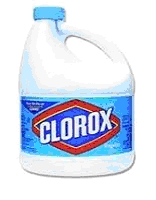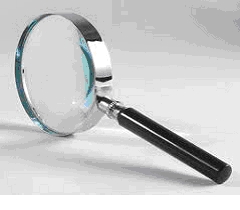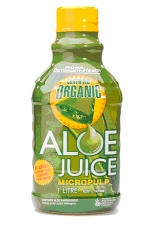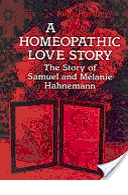The Low-Down on Potency
I’ve heard people say that Hahnemann was against the use of low potencies as they might cause aggravations, and that high potencies were so much safer. Nothing could be further than the truth. In fact, Hahnemann was very concerned about the tendency of “brash beginners” to prescribe too high and too often! He cautions us to start each chronic case “low” and ascend as needed, to put the remedy in water and succuss the bottle before each dose to avoid unintended provings and aggravations. (See # 161 of the Organon). However, even low potencies can aggravate if we don’t follow a few basic rules:
1. Start with a test dose, wait 24 hours to make sure you’re not dealing with a hypersensitive patient.
2. Put the remedy in water and succuss the bottle five times before each dose.
3. A potency like 6C can be given three times a day, 9C twice a day, 12C once or twice a day; but, if at any time you see a striking improvement, stop the remedy and wait; resume when the improvement stops. If at any time the person seems to be getting worse, stop the remedy and wait, an improvement may follow. If it doesn’t, it’s probably the wrong remedy.
4. Don’t tell a person who is aggravating from a remedy, “Keep taking it, it’s a good sign!” Yes, a similar aggravation might be a sign that the remedy chosen was correct, BUT, as Hahnemann says, all the more reason NOT to keep giving it! In the Organon, #276, he says the simillimum in too high a potency or in over-dose can do more harm than a totally wrong remedy.
5. In acute cases you’ll want to match the potency to the intensity of the complaint. A severe acute should be met with a 200C or a 1M, perhaps even a 10M if it’s that severe. Here’s where you need your high potencies! Only repeat if a relapse ensues.
6. Chronic cases often lack the intensity that acutes have; so, the lower potencies given daily or as-needed, to chip away at the complaint, are a better choice for these; more appropriate.
A friend once said to me, “I explained dosing to my husband like this, ‘It’s like kicking a ball up-hill. As long as it’s moving, you don’t have to do anything; but, when it starts rolling back down, that’s when you have to kick it again!'”
Good advice!
These are only guidelines, not laws. You will find exceptions. But, as Hahnemann always said, a mistake with a lower potency is not a crisis, you can’t always make that claim with the 200C, 1M or 10M.
ISOPATHY -The hair of the dog
Isopathy – Treating disease with the substance that caused the disease:
If people have a prejudice against isopathy, they’re going to fail in a lot of cases, especially acute cases, where the causal agent is known.
I had a client once whose chief complaint was horrible itching. We narrowed it down to her prescription of Welbutrin, an antidepressant. She had stopped taking it but the itching continued. She told me that people had dropped out of the Welbutrin trials in droves because of this itching! I start taking her case, but it didn’t add up to anything; that was what made me realize that her remedy was, in fact, potentized Welbutrin! I made a powder out of a Welbutrin tablet, I dumped it into an ounce of water, swished it around , then added the solution to half a (small) bottle of spring water, succussed 40 times, poured it out, refilled to the starting point and succussed 40 times, and repeated this procedure 12 times, then I told her to take a sip. She only took the one dose. The next day she told me the itching was tolerable and she didn’t have to scratch. A day later, it was gone! So, people, when you know the cause, and the case-taking doesn’t add up to a remedy, make a remedy from the causal agent!
The Buzz About Ledum
For mosquito bites, think of LEDUM. I’ve had the dubious opportunity to try this out twice now. In fact, I can remember being outside with no shoes on, and when I came in I realized my toes were itching. I looked down and there was a big, noticeable bite on my big toe, and I suspected there might be bites on the other toes as well. I wanted to scratch but I got Ledum instead. The itching stopped. Well, really, a fresh mosquito bite that stops itching in minutes? That’s unheard of!
When to Give the Constitutional Remedy
1. When the pathology is asymptomatic, picked up only on a routine lab test or doctor visit.
2. When the local complaint has nothing but common symptoms or at the very beginning of the local complaint.
3. When the patient is allergic to many things, instead of looking up “allergic to this/allergic to that…” give the constitutional remedy.
4. When there is no physical pathology/disease or complaint.
Do not go against the modalities!
Modalities are the things that make the complaint better or worse. If a person’s itchy rash is better for hot applications, don’t give Apis! If a person’s rash isn’t aggravated by hot bathing, don’t give Sulphur! If a person is better for a good night’s sleep, don’t give Lachesis! If a person says, “I love warm, closed rooms,” don’t make Pulsatilla your first choice! It’s hard to imagine what could be more important in a case than the modalities (except, of course, for finding the cause)! Be sure and ask for them. When someone tells you their complaint–and I don’t care what it is–-first try to find out the cause, what caused it, because you may be able to use an “ailments from” rubric to solve the case, which might make the symptoms, themselves, irrelevant; then, if discovering the cause does not open up the case for you, ask them, “What makes it better or worse?” It doesn’t matter what they say is wrong with them. Sometimes we can be overwhelmed when we hear a case! So much is wrong! It sounds so serious! Just remember to say, “What caused it?” Then, “What makes it better, even if just a little? What makes it worse?” Give examples: heat, cold, motion, cold drinks, hot drinks, lying down, hot or cold applications, sympathy/company, massage, pressure, sleep, etc. There’s almost nothing you can do if all you have is the name of the illness! But for example, if someone says, “I have a headache that’s better for hard pressure,” that could be Bryonia! Now, try to think of a remedy that’s WORSE for hard pressure–have you thought of one? Good; now, don’t give it!
Low Thyroid
Thyroid hormone controls metabolism and organ function, affecting weight gain, energy, skin condition, heart rate, cholesterol levels, menstrual regularity and memory as well as many other functions.
Symptoms of low thyroid include: Chilliness, dry skin, dry hair, hair loss, weight gain, nervousness and tremors, fatigue, forgetfulness, cold hands and feet, low body temperature and constipation.
Cause: poor nutrition, excessive intake of sugar and white flour products (junk food, in other words) and excessive estrogen, including the birth control pill and hormone replacement therapy during menopause.
Progesterone helps to support the thyroid.
What to do if you suspect under-active thyroid?
Thyroidinum 6X once a day. Also your constitutional remedy at a different time of day if you happen to know what it is. Natural progesterone cream might also help. Slowly cut back on Synthroid after two months if you’re already taking it–unless you’ve just started, in which case you can just stop it.
Bleach Headache
Yet another example of how knowing the etiology can solve your case. One of my clients told me about a headache she got after taking a remedy I prescribed: a sharp pain in the forehead, left side, over the eye, worse pulling the hair back even slightly.
I checked the MM to see if she was proving the remedy but I found no such headache description in the MM. It was then that she mentioned, “I got the headache after cleaning mold with a solution of bleach.” I said, “Oh my God! Make a remedy out of the bleach!”
It was a first time for her–making a remedy–but I have directions on my website (“How to Make Your Own Remedy”: https://hpathy.com/homeopathy-papers/how-to-make-your-own-remedy/) and half an hour after taking one sip of “Bleach 12X”, and following a slight aggravation, the headache was gone! (The more recent a complaint is, the faster it should leave after a remedy.)
When you know what the cause is, very often that’s the remedy that will cure–especially when the remedy picture doesn’t match an established remedy.
Potency Selection in Acute Prescribing
People wanted to know, in conjunction with my article on acute prescribing, (https://hpathy.com/homeopathy-papers/acute-prescribing-in-homeopathy-even-you-can-learn-to-do-it/) what potency to use? Generally, for acutes, nothing less than a 30C, three times a day for three days. Usually if you’ve seen no progress by then, it’s the wrong remedy. Stop dosing as soon as you see a striking improvement. Or, you can give one dose of a 200C or 1M. If the remedy works, don’t repeat unless a relapse ensues. The more severe the complaint, the higher the potency should be.
If an acute has just started, you should see results almost immediately if you’ve used the right potency. If the acute has been around for a few days or a week or two, you may not see results right away, it may take two or three days.
If you get an aggravation, stop dosing. An improvement may follow shortly if the remedy was correct. Generally, the rule in acute dosing is “as needed”. You were improving, then you started to relapse, now it’s time to redose.
Your first dose can be “dry”, but if there is to be subsequent dosing, put the remedy in water! Use disposable cups or bottles. If you use a bottle, always shake or succuss the bottle before each dose. If you use a cup, stir the cup before each dose with a straw or other disposable implement. If you think you can get away with taking multiple doses dry, you will be in for a big surprise! You may prove the remedy or you may antidote all the progress you’ve made to that point! (See aph. 247 of the Organon).
The Magnifying Glass Cure
– from Robin Murphy’s lectures: Using a magnifying glass, concentrate the sun’s rays on: melanoma, birthmarks, warts, cysts, ulcers or varicose veins until a burning sensation is felt, then stop. Do this once or twice a day. Give it about two weeks to see results.
Casetaking and Prescribing Hints for Chronic Disease
Look for the following in the case:
Excesses
Deficiencies
Blockages
Loss of vital fluids
Sensitivities (to noise, weather, etc. What do they over-react to?)
Motivation – (What’s their motivation for doing whatever it is they say they’re doing? For example, Nux v. is ambitious. Arsenicum feels vulnerable and insecure so he or she is motivated to accumulate more money than needed and to cultivate a support network of people who are dependent on him or her so they can never leave!!!!! Phosphorus is motivated to make friends in order to counter the delusion that he is all alone, isolated on some distant island.)
Time/energy/attention (Where is it all going? What is using up all their energy?)
Suffering (Treat any suffering first.)
Keynotes of Remedies (Look for them.)
Etiology (Try to find the cause of the complaint.)
Find the top layer (The top layer is a chronic disease with X or Y acutes. You’ll need a remedy for the disease and an intercurrent remedy for the acute that comes with it–it could be painful menses, migraine headaches, acid reflux, etc.)
Essence (There are a lot of different names for this. Some call it the constitutional remedy. Some call it the “fundamental remedy”; but, it is the remedy underneath the disease–the person’s personality, if you will.)
Constitution (Finally, determine the constitutional remedy–the healthy state the person was born with. It could be calc-carb, sulphur, silica, etc. For example: top layer: cancer. Remedy: Conium. Essence remedy underneath: Nat-mur. Constitutional remedy: Phosphorus. How would you know? The cancerous tumor is hard/indurated with a concomitant of vertigo on turning the head: Conium. The patient began her life as an out-going, sociable person, extroverted, tall and thin: Phosphorus; then, was put into foster care after losing her parents and became an introverted Nat-mur. (Nat-mur has a relationship with Conium, according to Robin Murphy.)
Regarding Aggravations: If a remedy aggravates with no amelioration, it could mean: Right remedy but out of order. You may be overlooking a recent layer; you may have prescribed “too deep”. Look for the suffering in the case, which needs to be cleared out first; such as, pain or infection or disease/pathology. Try the remedy again after you have cleared the top layer and it might work now.
A Vote for Ferrum Phos
Take Ferrum phos. at the first sign of a cold! This has worked so well for me that a tube of Ferr-phos 30c is in the drawer by the side of my bed for night time emergencies like sore throats. This morning at 5 AM, I woke up with a severe coughing fit! It seemed to come from an “itchy” spot in my right lung. I said, Oh my God! This is really bad! Who knows what it could have been the beginning of? I got up, went to the bathroom to brush my teeth. My saliva was really thick! I then went to the refrigerator and pulled out the heavy artillery–Ferrum phos. 200C! A sip of that and two hours later, I was 80% better. I took another dose around 10 AM after succussing the bottle 10 times, and I’ve taken nothing since–it’s all gone!
Retrospective Prescribing
A child had measles when he was 5 years old and became deaf in one ear. You take the case and give the indicated remedy and it doesn’t work. Then you give him the remedy he needed at the time he had measles when he was 5, even though there are no symptoms of the remedy present, and the deafness goes away.
– Robin Murphy, ND
Sepia’s Dilemma
Sepias are here to learn to “draw the line”. They snap at their family members because they are not good at drawing the line. They are independent, but not independent enough. They care too much about what everyone is expecting from them, and always put their own desires on the back burner. Eventually, they get really irritable because they never get to do what they want. After they have done everything for everyone else, they are too tired to do anything for themselves, and that is when they get snappy. If they knew how to draw the line, they wouldn’t find themselves in such a dilemma.
Eventually, Sepia goes beyond snapping and irritability – they just want to be left alone, and withdraw from everyone. Even though it looks like indifference to the rest of the world, it is actually just a complete exhaustion of their energy.
–Mati Fuller, DIHom
Do you people know about Aloe Vera for burns?
I keep an aloe plant in my house just for burns. I also have a bottle of aloe juice in my refrigerator just in case I burn myself cooking. I pour the bottle on my hand, and in seconds the pain is gone and the whole thing is forgotten!
Do you know who the first woman doctor was?
Constantine Hering bestowed an honorary MD degree to Melanie Hahnemann, making her the first woman doctor and first woman homeopath! Read about her life in A Homeopathic Love Story by Rima Handley.
Equivalents
David Little says an LM/6 is like a 50M.
How did he know?
Hahnemann became famous for stopping an epidemic of Cholera. Before microscopes were even invented, Hahnemann postulated that cholera was caused by invisible animals which were parasites that bred in the body and if you boil your water, it would kill them.
Aggravations
A dissimilar aggravation means you gave the wrong remedy. However, its possible to have a situation where the patient is both improving and proving the remedy at the same time. Needless to say, stop dosing! If proving symptoms don’t go away, use the “Aggravation Zapper”:
https://hpathy.com/homeopathy-papers/the-aggravation-zapper/
Not Lycopodium?
What to do if Lycopodium doesn’t work and you’ve got a patient with right-sided complaints, gas and bloating and craves sweets? It’s Kali carb! But, Kali carb also craves sour and the aggravation time is 2-4 a.m.
Calc-ars.
Calc-ars. is the #1 remedy for pancreatic cancer.
Snakes
When you think of snake remedies, think of: sepsis, the circulation, hot flashes, hemorrhages and high blood pressure.
Carbon remedies
The carbon element takes away vital heat; so, Nat-mur is hot, Nat-carb is cold.
Nat-phos.
When you think of Nat-phos., think about acid-alkaline imbalance. This remedy will be called for in cases of: hyperacidity, aggravations from citrus and vinegar, sour belching, acid indigestion, worms, sour stool, aggravation from sweets and alcoholic beverages, weak digestion and anything you would take bicarbonate of soda for.
All the Kali’s
Wandering pains is something all the Kali’s have in common.











Thank you very much, I realy like this article, best regards
Thank you very much for this article which I enjoyed. Warm regards.
the article is excellent. i like it. thanks
Thank YOU so much for reading it! 🙂
Packed with full of knowledge and wisdom. Please continue the the tidbits every month if possible. They will be helpful and benefit many.
Thanks Elaine
really useful tips! Thank you!!!
OK, I’m going to get started on my next Tidbits installment now!
we could understand the Ferr Phos works well during cold. Your article gives lot of information. thanks for your effort
I love reading your articles. I wish you were in Australia, then I could come and see you myself.
Fiona, didn’t you know? I take online cases! I say so at the bottom of all my articles but I guess no one sees that. I’m as near as Australia thanks to the wonders of the internet!
Extremely useful tips. Every reader must definitely benefit and so will the patients be.
Thanks, Elaine, for your desire for share and help. That is a trait of the great homeopaths (and persons).
I would appreciate some day you could write a little about the repertories and their secrets (terminology, where
to find symptons, complex symptoms (made up of several single one´s), etc.
Wow, what an amazing coincidence! I’m doing that right now!
Thanks Elaine for contributing your very interesting column Tidbits. I’ll surely be reading this item in all the coming issues of Ezine
Everything is from Master’s pen- baed on knowledge and experience. It’s like a torch light making things clear and understandable. Thanks Elaine, continue the good work.
Thanks Elaine, I enjoy your work. You make everything so clear.
I’ll have to check out your web-site